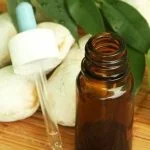Are you wondering how do you thin aromatherapy oils for electric diffuser? Using essential oils in an electric diffuser can be a great way to experience the benefits of aromatherapy, but it’s important to ensure that the oils are properly thinned for safe and effective use.
In this article, we will explore the concept of aromatherapy and its benefits, discuss the types of essential oils suitable for use in electric diffusers, explain the reasons why it is important to thin essential oils, explore various methods for thinning essential oils, provide helpful tips and tricks, and address important safety considerations when using aromatherapy oils in an electric diffuser.
Aromatherapy has gained popularity as a natural way to promote overall well-being and health. By using essential oils extracted from plants, aromatherapy harnesses their aromatic properties to support physical and emotional wellness. Essential oils have been used for thousands of years for their healing properties, and they can be used in a variety of ways, including through inhalation with the use of electric diffusers.
When it comes to using essential oils in an electric diffuser, choosing the right type of oil and properly thinning it is crucial for achieving the desired therapeutic effects. Thinning essential oils not only ensures proper diffusion within the device but also helps prevent damage to the diffuser itself.
Additionally, properly thinned essential oils are easier on your respiratory system and minimize any potential adverse reactions. In the following sections, we will delve into the reasons why thinning aromatherapy oils is important and explore various methods and techniques for doing so effectively.
What Is Aromatherapy?
Aromatherapy is the use of essential oils to promote mental, emotional, and physical well-being. These oils are derived from natural plant sources and are known for their distinct fragrances and therapeutic properties. When used in an electric diffuser, aromatherapy oils can create a soothing and relaxing atmosphere in any space.
Benefits of Aromatherapy
– Stress Relief: Certain essential oils have calming properties that can help reduce stress and anxiety.
– Improved Sleep: Aromatherapy oils such as lavender may aid in promoting better sleep by creating a tranquil environment.
– Enhanced Mood: Citrus essential oils like lemon or orange are known for their uplifting and mood-boosting effects.
– Respiratory Support: Some essential oils have decongestant properties that can provide relief from respiratory issues.
Types of Essential Oils for Aromatherapy
When it comes to selecting essential oils for use in an electric diffuser, it is important to consider the specific benefits each oil offers. Some popular options include:
1. Lavender Oil: Known for its calming and soothing effects, this oil is commonly used for relaxation and improved sleep.
2. Peppermint Oil: This refreshing oil is often used to promote alertness, relieve headaches, and clear the sinuses.
3. Eucalyptus Oil: With its minty fragrance, eucalyptus oil is often used to ease respiratory issues and congestion.
How do you thin aromatherapy oils for electric diffuser? The next section will explore the importance of properly thinning essential oils before using them in an electric diffuser, as well as various methods for achieving the right consistency.
Essential Oils for Electric Diffusers
When it comes to using essential oils in an electric diffuser, it’s important to choose the right type of oil for the best results. There are many different essential oils available, each with its own unique properties and benefits. Here are some of the most popular types of essential oils that are suitable for use in electric diffusers:
- Lavender oil: Known for its calming and relaxing properties, lavender oil is a popular choice for use in electric diffusers, especially before bedtime.
- Peppermint oil: With its invigorating and refreshing scent, peppermint oil is great for boosting energy and improving focus.
- Eucalyptus oil: This essential oil has a fresh and crisp aroma that can help clear the sinuses and promote easier breathing, making it ideal for use in electric diffusers during cold and flu season.
- Lemon oil: The bright and citrusy scent of lemon oil is perfect for creating a fresh and uplifting atmosphere in your home or workspace.
These are just a few examples of the many essential oils that can be used in electric diffusers. When choosing an essential oil, consider the specific benefits you are looking to achieve and select an oil that aligns with those goals.
It’s important to note that not all essential oils are suitable for use in electric diffusers. Some oils may be too thick or heavy, which can clog the diffuser or affect its performance. This is why it’s crucial to properly thin aromatherapy oils before using them in an electric diffuser. In the next section, we will explore why thinning essential oils is important and how to do it effectively.
Why Thin Aromatherapy Oils?
Thinning essential oils before using them in an electric diffuser is crucial for several reasons. When essential oils are too thick, they can clog the diffuser and prevent it from functioning properly. Additionally, using undiluted essential oils can result in overpowering scents that may cause discomfort or even adverse reactions in some individuals. Therefore, understanding the importance of thinning aromatherapy oils for use in an electric diffuser is essential for a successful and pleasant aromatherapy experience.
One of the main reasons why it is important to thin aromatherapy oils for an electric diffuser is to ensure that the oil is dispersed evenly and effectively throughout the room. Thinning the essential oil allows it to be more easily vaporized and distributed by the diffuser, maximizing its benefits and creating a more consistent aroma in the air.
This also helps to avoid any potential waste of the precious essential oil, as it will be used more efficiently when properly thinned.
Moreover, thinning aromatherapy oils can also help to prolong the lifespan of the electric diffuser. Thick or undiluted essential oils can leave residue inside the diffuser, leading to build-up that may eventually damage its internal components or affect its performance. By ensuring that the essential oils are appropriately thinned before use, you can maintain the functionality and longevity of your electric diffuser.
| Reasons for Thinning Aromatherapy Oils | Importance |
|---|---|
| Even dispersion of oil | Maximizes benefits and minimizes waste |
| Prolongs diffuser lifespan | Avoids damaging build-up inside the device |
Methods of Thinning Aromatherapy Oils
When it comes to using essential oils in an electric diffuser, it’s important to ensure that the oils are properly thinned before use. This ensures that the oils can be effectively dispersed into the air and offer their aromatherapeutic benefits without causing damage to the diffuser. There are several methods and techniques for thinning essential oils, each with its own benefits and considerations.
Dilution With Carrier Oils
One of the most common methods for thinning essential oils for use in an electric diffuser is to dilute them with a carrier oil. Carrier oils such as coconut oil, almond oil, or jojoba oil can help to reduce the potency of essential oils, making them suitable for use in a diffuser. To use this method, simply mix a few drops of your chosen essential oil with a larger amount of carrier oil before adding it to your diffuser.
Alcohol Dilution
Another method for thinning essential oils is through alcohol dilution. Mixing essential oils with high-proof alcohol can help to disperse the oils more effectively when used in an electric diffuser. However, it’s important to note that not all essential oils are compatible with alcohol dilution, so it’s essential to research the specific oil you’re working with before using this method.
Distilled Water
Using distilled water as a thinning agent is another common technique for preparing essential oils for use in an electric diffuser. Simply adding a few drops of essential oil to a larger quantity of distilled water can help to reduce the potency of the oil and ensure that it can be effectively dispersed by the diffuser.
By exploring these various methods for thinning aromatherapy oils, you can ensure that you are able to fully enjoy the benefits of using essential oils in your electric diffuser while also taking proper care of your device. How do you thin aromatherapy oils for electric diffusion really depends on what type of scent or effect you want from them as well as considering any risk factors associated with those scented options too?
Tips for Thinning Aromatherapy Oils
When it comes to using essential oils in electric diffusers, it’s important to understand the proper methods for thinning aromatherapy oils. This ensures that you can achieve the perfect balance of scent and effectiveness without overwhelming your senses or damaging your diffuser. Here are some helpful tips and tricks for properly thinning essential oils for use in an electric diffuser.
Use Carrier Oils
One effective method for thinning aromatherapy oils is to use carrier oils such as jojoba, sweet almond, or coconut oil. These carrier oils not only help to dilute the potency of essential oils, but they also act as a base for the aroma to spread more evenly throughout the room. When mixing with carrier oils, it’s important to follow recommended dilution ratios to ensure safety and effectiveness.
Consider Distilled Water
Another way to thin essential oils for electric diffuser use is by incorporating distilled water into the mix. This helps to create a lighter, more subtle scent that can be dispersed throughout a larger area. However, it’s important to note that not all essential oils will mix well with water, so be sure to research which ones are suitable for this method.
Experiment With Blending
For those who enjoy experimenting with scents, blending different essential oils together can be a fun way to create unique fragrances while also helping to naturally thin out the potency of each oil. By combining complementary scents, you can customize your aromatherapy experience and find the perfect balance of fragrance strength for your electric diffuser.
By utilizing these tips and tricks for properly thinning aromatherapy oils, you can enhance your overall experience with electric diffusers while also ensuring safety and effectiveness in achieving therapeutic benefits from essential oils. Understanding the importance of proper dilution and using these methods can help you make the most out of your aromatherapy practice.
Safety Precautions
When using aromatherapy oils in an electric diffuser, it is important to take certain safety precautions to ensure a safe and enjoyable experience. One of the key considerations is to avoid using oils that have not been properly thinned for use in the diffuser. This can lead to clogging of the diffuser and may even cause damage to the unit.
It is important to remember that not all essential oils are suitable for use in electric diffusers. Some oils can be too thick and viscous, which can make it difficult for them to diffuse properly. In some cases, undiluted essential oils can also be too potent and overwhelming when used in a diffuser, leading to adverse reactions such as headaches or nausea.
Another important safety consideration when thinning and using aromatherapy oils in an electric diffuser is to always follow the manufacturer’s instructions for dilution ratios. Different types of essential oils require different dilution ratios, so it is crucial to adhere to these guidelines to ensure safe and effective use of the diffuser.
| Safety Precaution | Description |
|---|---|
| Proper Dilution | Follow manufacturer’s instructions for dilution ratios |
| Avoiding Clogging | Thinning oils prevents clogging of the electric diffuser |
| Suitable Essential Oils | Use only essential oils that are suitable for use in electric diffusers |
In addition, practicing proper storage of your essential oils is also crucial for maintaining their quality and potency over time. Keep them away from direct sunlight and extreme temperatures, as these can degrade the quality of the oil. By taking these safety precautions into consideration, you can ensure a safe and enjoyable aromatherapy experience with your electric diffuser.
Conclusion
In conclusion, it is crucial to understand the significance of properly thinning aromatherapy oils for use in an electric diffuser. Aromatherapy is a well-known practice that offers a range of benefits, from promoting relaxation and reducing stress to improving mental clarity and concentration. However, when using essential oils in an electric diffuser, it is important to choose the right oils and properly thin them to ensure safe and effective diffusion.
Thinning essential oils before using them in an electric diffuser helps to ensure that the oil does not clog the diffuser or produce an overpowering scent. Additionally, proper thinning can also help to extend the lifespan of the diffuser and prevent any potential damage. Understanding the methods for thinning aromatherapy oils, such as using carrier oils or alcohol, is essential for achieving optimal results with your electric diffuser.
When considering how do you thin aromatherapy oils for electric diffuser use, it’s important to take into account safety precautions. Essential oils are highly concentrated substances that can be harmful if not used properly.
Always follow recommended guidelines for dilution ratios and consider personal sensitivity and allergies when choosing and thinning essential oils for use in an electric diffuser. By taking these factors into consideration, individuals can enjoy the full benefits of aromatherapy while ensuring a safe and pleasant experience with their electric diffusers.
Frequently Asked Questions
How Do You Make Fragrance Oil for Electric Diffuser?
To make fragrance oil for an electric diffuser, start by choosing a carrier oil like sweet almond or jojoba. Then, add your desired essential oils to the carrier oil and mix well. Pour the mixture into your electric diffuser and enjoy the pleasant scent.
What Is the Best Way to Dilute Essential Oils?
The best way to dilute essential oils is to use a carrier oil such as coconut, jojoba, or sweet almond oil. Simply mix a few drops of the essential oil with the larger amount of carrier oil before applying it to your skin or using it in a diffuser.
How Can I Make My Electric Diffuser Smell Stronger?
To make your electric diffuser smell stronger, try adding more drops of essential oil to the water. Be cautious not to add too much as this can be overpowering. Also, consider using stronger scented essential oils like peppermint or eucalyptus for a more intense aroma.

Are you looking for a natural way to improve your health and wellbeing?
If so, aromatherapy may be the answer for you.





